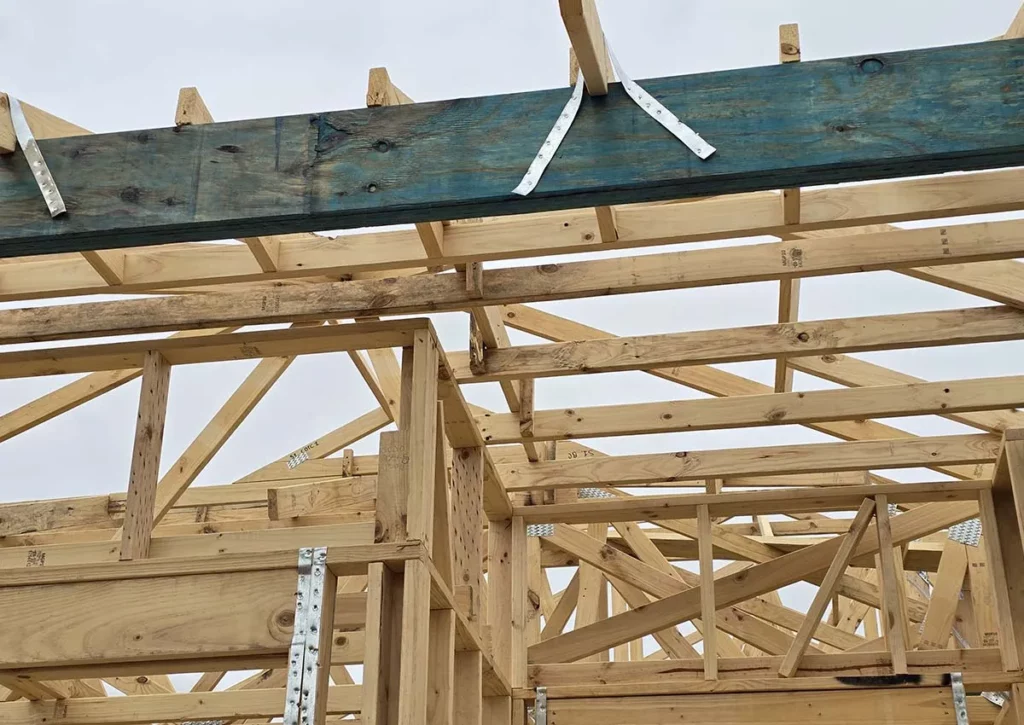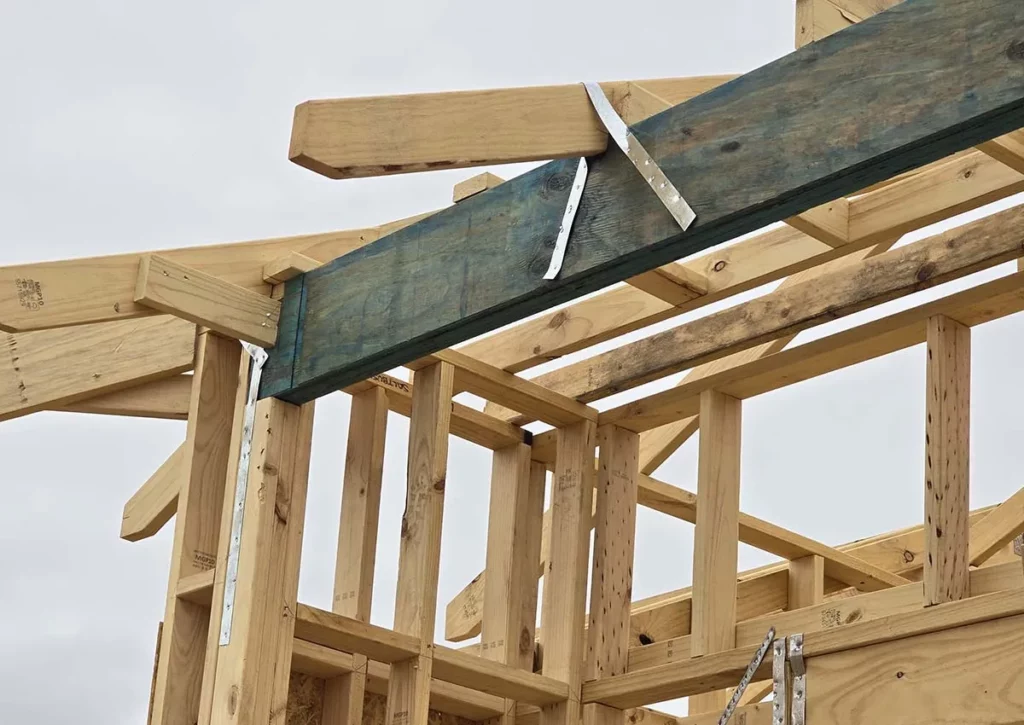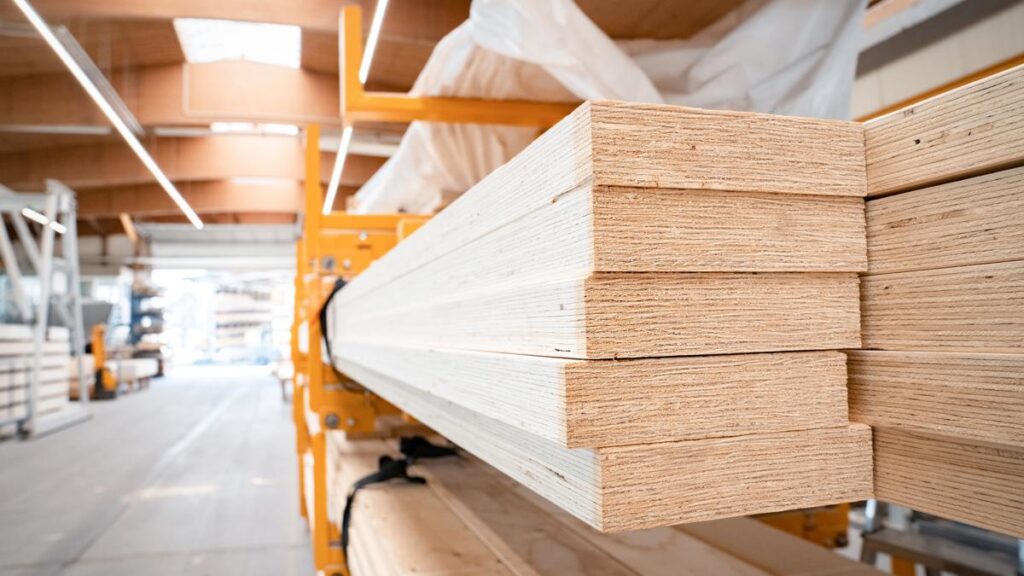The Advantages of LVL Timber in Heavy-Duty Construction Formwork
In the realm of heavy-duty construction formwork, LVL timber stands out as a versatile and reliable material. LVL, or laminated veneer lumber, has gained popularity in recent years due to its exceptional properties and numerous benefits. This article aims to explore the advantages of LVL timber in heavy-duty construction formwork, shedding light on its understanding, role, benefits, comparisons to other materials, and future trends.
Understanding LVL Timber
Before delving into the advantages, it is essential to have a solid grasp of lvl timber formwork and its properties. LVL timber is a type of engineered wood, composed of several thin veneer layers bonded together with adhesives. This layering technique enhances the timber's strength and stability while reducing its susceptibility to warping or splitting. Consequently, LVL timber boasts excellent load-bearing capabilities and dimensional stability, making it an ideal choice for heavy-duty construction formwork.
Definition and Properties of LVL Timber
LVL timber is commonly defined as a structural timber product consisting of laminated veneer layers. These layers are typically oriented parallel to the wood's grain to maximize its mechanical performance. The manufacturing process involves the application of heat and pressure during bonding, resulting in a highly durable and strong material. Additionally, LVL timber possesses inherent properties such as resistance to moisture, fire, and insects, making it even more suitable for construction applications.


The Manufacturing Process of LVL Timber
To create LVL timber, the manufacturing process starts with peeling logs into thin veneer sheets. These veneer sheets are then dried to ensure optimum moisture content. Next, adhesive is applied to the veneer surfaces, and the layers are assembled. The assembly is subjected to heat and pressure in a hydraulic press, allowing the adhesive to cure and bond the veneer layers together. Finally, the bonded veneers are cut to the desired dimensions, resulting in LVL timber with exceptional strength and stability.
During the manufacturing process, quality control measures are implemented to ensure the production of high-quality LVL timber. Each veneer sheet is carefully inspected for defects such as knots, splits, or irregularities that could compromise the structural integrity of the final product. Additionally, the adhesive used in the bonding process undergoes rigorous testing to ensure its compatibility with the wood and its ability to withstand various environmental conditions.
Furthermore, LVL timber can be customized to meet specific project requirements. Different thicknesses and sizes can be produced, allowing for versatility in construction applications. This flexibility in design and dimension makes LVL timber a popular choice in the construction industry, where precision and strength are paramount.
The Role of LVL Timber in Heavy-Duty Construction
LVL timber plays a pivotal role in heavy-duty construction, particularly in formwork applications. Formwork refers to the temporary structures used to support concrete during pouring, shaping, and curing processes. The role of LVL timber in such applications is twofold – providing reliable support and ensuring structural integrity.
Furthermore, LVL timber is known for its sustainability and environmental benefits. Made from layers of wood veneers bonded together with adhesives, LVL utilizes wood resources efficiently and minimizes waste. This eco-friendly aspect is increasingly important in modern construction practices, where sustainability is a key consideration.
Key Features of LVL Timber for Construction
One notable feature of LVL timber is its high strength-to-weight ratio. Compared to solid timber, LVL offers superior load-bearing capacity while being lighter and easier to handle. This characteristic is crucial for heavy-duty construction where large and complex formwork structures are required. Additionally, LVL timber's dimensional stability minimizes the risk of deformation or misalignment during concrete pouring, maintaining the accuracy and integrity of the formwork.
In addition to its strength, LVL timber also exhibits excellent fire resistance properties, making it a safe choice for construction projects where fire safety is a priority. The inherent charring rate of LVL is predictable, allowing engineers to design structures with specific fire ratings and ensuring the safety of occupants in case of a fire.
LVL Timber in Formwork Applications
The versatility of LVL timber makes it suitable for various formwork applications. Whether it be vertical or horizontal formwork, LVL can be easily cut and shaped to fit the desired dimensions. Moreover, LVL timber's smooth surface minimizes imperfections on the concrete finish, resulting in a high-quality end product. Contractors also appreciate the reusability of LVL timber as it can withstand multiple cycles of use, reducing construction costs and waste generation.
Overall, LVL timber continues to be a preferred choice in heavy-duty construction due to its strength, sustainability, dimensional stability, and fire resistance properties. Its versatility and cost-effectiveness make it an indispensable material for formwork applications, ensuring the success and safety of construction projects.
Benefits of Using LVL Timber in Construction Formwork
When it comes to heavy-duty construction formwork, LVL timber offers several benefits that make it the preferred choice for contractors and engineers.
Durability and Strength of LVL Timber
One of the primary advantages of LVL timber is its exceptional durability and strength. The manufacturing process ensures that the adhesive bond between veneer layers is robust and reliable. This results in a material capable of withstanding high loads, heavy concrete pours, and extreme weather conditions. Contractors can rely on LVL timber to deliver the desired performance and structural integrity throughout the construction process.
Cost-Effectiveness of LVL Timber
Another advantage of LVL timber is its cost-effectiveness. Although the initial investment may be slightly higher than conventional timber, the long-term benefits outweigh the upfront costs. The reusability of LVL timber significantly reduces the need for frequent replacement, resulting in substantial savings over time. Additionally, LVL timber's dimensional stability minimizes waste, since it can be precisely cut to fit, reducing material wastage and associated expenses. Find more about stability on https://cursus.edu/en/28581/stability-and-instability
Environmental Impact of Using LVL Timber
Concerns for the environment have become increasingly prevalent in the construction industry. In this regard, LVL timber presents a sustainable option. The production process of LVL timber requires less raw material compared to solid timber, minimizing deforestation impacts. Furthermore, LVL timber's long lifespan and reusability contribute to reducing waste generation, emphasizing its eco-friendly nature. By opting for LVL timber in construction formwork, builders can prioritize both performance and environmental responsibility.
Moreover, LVL timber also offers excellent fire resistance properties. Due to its manufacturing process, LVL timber has a lower flammability compared to conventional timber. This makes it a safer choice for construction projects, reducing the risk of fire-related accidents and damage.
Additionally, LVL timber's versatility is worth highlighting. It can be easily customized to meet specific project requirements, allowing for intricate designs and complex formwork shapes. This flexibility makes LVL timber suitable for a wide range of construction applications, from residential buildings to large-scale infrastructure projects.
Comparing LVL Timber to Other Construction Materials
Beyond its inherent advantages, LVL timber outperforms other commonly used construction materials in heavy-duty formwork applications.
When delving deeper into the realm of construction materials, it becomes evident that LVL timber stands out as a versatile and reliable option for various structural needs. Its composition, consisting of bonded layers of wood veneers, not only enhances its strength but also contributes to its exceptional durability. This durability ensures that LVL timber can withstand the rigors of heavy-duty formwork applications, providing long-lasting support and stability to construction projects.
LVL Timber vs. Solid Timber
While solid timber holds its place in construction, LVL timber surpasses it in numerous aspects. LVL timber's layered structure enhances its load-bearing capacity, providing greater strength compared to solid timber. Additionally, LVL timber's improved dimensional stability reduces the risk of deformation or warping, ensuring the accuracy and precision of the formwork. These advantages make LVL timber an excellent alternative to solid timber in heavy-duty construction formwork.
Moreover, the manufacturing process of LVL timber involves precise engineering and quality control measures, resulting in a consistent and uniform product. This consistency is crucial in construction, as it ensures that each piece of LVL timber meets the required standards for strength and performance. As a result, builders and contractors can rely on LVL timber to deliver consistent results, enhancing the overall efficiency of construction projects.


LVL Timber vs. Steel and Concrete
Steel and concrete are traditional materials extensively used in heavy-duty construction formwork. However, LVL timber offers distinct advantages over these materials. While steel may provide high strength, it is often heavy, expensive, and requires specialized expertise for installation. Concrete, on the other hand, lacks the flexibility and versatility offered by LVL timber. Additionally, LVL timber's superior weight-to-strength ratio, reusability, and ease of handling make it a more practical and cost-effective choice for construction formwork applications. To read more about flexibility click here.
Furthermore, the environmental impact of LVL timber is significantly lower compared to steel and concrete. As a renewable resource, wood used in LVL production can be sourced from sustainably managed forests, promoting ecological balance and responsible resource utilization. This eco-friendly characteristic adds another layer of appeal to LVL timber, making it a preferred choice for environmentally conscious construction projects seeking sustainable building materials.
Future Trends in Using LVL Timber in Construction
The increased recognition of LVL timber's benefits paves the way for future trends in its usage within the construction industry.
Technological Advancements and LVL Timber
The constant advancements in technology present opportunities for further enhancing the performance of LVL timber. Continued research into adhesive technologies, manufacturing processes, and design optimization can unlock even greater potentials for LVL timber in heavy-duty construction formwork. These advancements can lead to improved performance, increased efficiency, and further reductions in the environmental impact of LVL timber.
For instance, scientists are exploring the use of nanotechnology to improve the strength and durability of LVL timber. By incorporating nanoparticles into the adhesive used to bond the veneers together, researchers have been able to enhance the structural integrity of LVL timber, making it even more resistant to bending and warping. This breakthrough technology has the potential to revolutionize the construction industry, allowing for the construction of taller and more complex structures using LVL timber.
Sustainability and LVL Timber in Construction
In light of global environmental concerns, sustainable construction practices are of paramount importance. LVL timber's inherent sustainability makes it a viable option for eco-conscious builders. As awareness grows and regulations become more stringent, the demand for sustainable materials, such as LVL timber, is expected to rise. Consequently, LVL timber will continue to play a significant role in heavy-duty construction formwork, contributing to a greener and more sustainable construction industry.
Moreover, the sustainable nature of LVL timber extends beyond its raw materials. The production process of LVL timber requires less energy and emits fewer greenhouse gases compared to other construction materials, further reducing its environmental footprint. Additionally, LVL timber can be easily recycled or repurposed at the end of its life, minimizing waste and promoting a circular economy.
Furthermore, architects and designers are increasingly incorporating LVL timber into sustainable building designs. By utilizing LVL timber in innovative ways, such as creating exposed structural elements or using it as a renewable alternative to concrete and steel, construction professionals can create aesthetically pleasing and environmentally friendly structures.
In conclusion, LVL timber offers numerous advantages for heavy-duty construction formwork. Its understanding, role, benefits, and comparisons to other materials highlight the reasons why it is a preferred choice in the industry. Furthermore, the future trends in LVL timber usage emphasize its continued relevance and the potential for even greater advancements. By harnessing the advantages of LVL timber, construction professionals can optimize their projects and deliver outstanding results in heavy-duty construction formwork.
Read more at: A Guide to Selecting the Best LVL Formwork Timber for Your Needs

